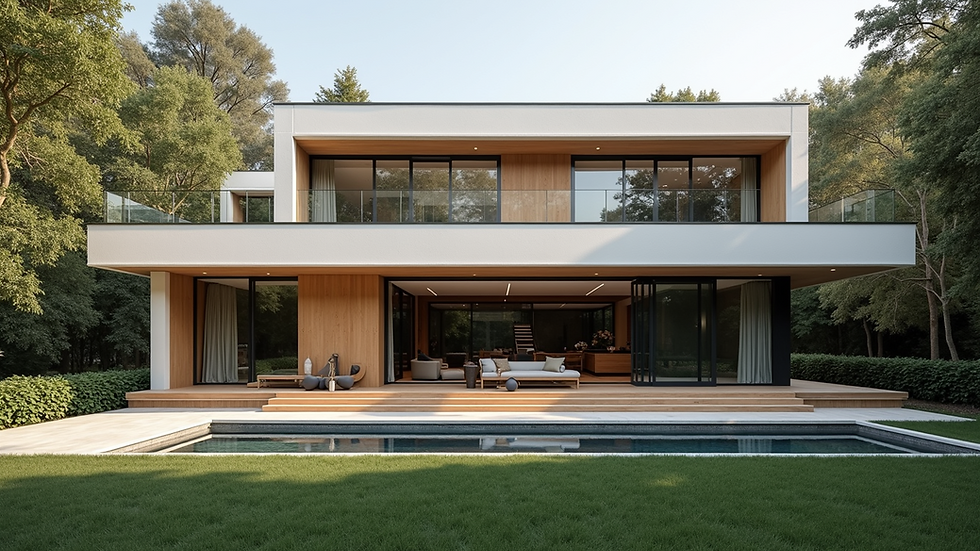Navigating the Custom Home Design Process
- Brad Donohoe
- Sep 23
- 4 min read
Building a home tailored to your needs and style is an exciting adventure. It’s a chance to create a space that truly feels like yours. However, the process can seem overwhelming at first. From choosing the right design to managing budgets and timelines, there are many steps to consider. I want to share a clear, straightforward guide to help you navigate the custom home creation journey with confidence.
Understanding the Custom Home Creation Process
When you decide to build a custom home, you’re starting a unique project. Unlike buying an existing house, this process lets you control every detail. You get to pick the layout, finishes, and features that fit your lifestyle. But it also means you need to be involved in many decisions.
The first step is to find a builder who understands your vision and communicates well. A good builder will guide you through the design and construction phases, keeping you informed and involved. For example, Donohoe Custom Homes in Cedar Rapids, Marion, and Coralville focuses on clear communication and efficient project delivery. This approach helps build trust and ensures your home turns out just as you imagined.
Once you have a builder, you’ll work with architects or designers to create your plans. This stage involves discussing your needs, preferences, and budget. You might want an open floor plan, a large kitchen, or energy-efficient features. Be honest about what matters most to you. This clarity helps the design team create a home that fits your lifestyle.

Key Steps in the Custom Home Creation
Building a custom home involves several important steps. Here’s a simple breakdown to help you understand what to expect:
Initial Consultation
Meet with your builder and design team. Share your ideas, budget, and timeline. This meeting sets the foundation for your project.
Design Development
The architect or designer creates preliminary plans. You review these and suggest changes. This phase may take a few rounds to get everything right.
Budgeting and Contract
Once the design is finalized, your builder provides a detailed cost estimate. Review it carefully and ask questions. When you agree, you sign a contract to start construction.
Permitting and Approvals
Your builder handles permits and inspections required by local authorities. This step ensures your home meets all safety and zoning rules.
Construction
The building process begins. Your builder manages subcontractors, materials, and schedules. Regular updates keep you informed about progress.
Final Walkthrough and Move-In
After construction, you inspect the home with your builder. Any issues are addressed before you move in.
Throughout these steps, staying organized and communicating openly with your builder is key. Don’t hesitate to ask for updates or clarification. This partnership is essential for a smooth experience.

Is $500,000 Enough to Build a House?
A common question is whether $500,000 is enough to build a custom home. The answer depends on several factors, including location, size, design complexity, and material choices.
In areas like Cedar Rapids, Marion, and Coralville, $500,000 can often cover a well-designed, quality home. However, it’s important to plan carefully. Here are some tips to make the most of your budget:
Prioritize Your Needs
Focus on must-have features first. For example, if a large kitchen is essential, allocate more budget there and consider simpler finishes elsewhere.
Choose Efficient Designs
Simple floor plans with fewer corners and complex rooflines reduce construction costs.
Select Materials Wisely
Some materials look great but are expensive. Ask your builder for alternatives that offer similar aesthetics at a lower cost.
Plan for Contingencies
Set aside 5-10% of your budget for unexpected expenses. This cushion helps avoid stress during construction.
Work with Experienced Builders
Builders familiar with the local market can help you get the best value and avoid costly mistakes.
Remember, every home is different. A clear budget and open communication with your builder will help you understand what’s possible within $500,000.
Managing Your Timeline and Expectations
Building a custom home takes time. From design to move-in, the process can take several months to over a year. Managing your timeline and expectations is crucial to avoid frustration.
Start by discussing the estimated schedule with your builder. Ask about key milestones like design completion, permit approval, and construction phases. Keep in mind that weather, material availability, and inspections can cause delays.
Here are some tips to stay on track:
Stay Involved
Regularly check in with your builder. Attend site visits if possible to see progress firsthand.
Make Decisions Promptly
Delays often happen when decisions about finishes or changes are postponed. Try to finalize choices quickly.
Prepare for Move-In
Plan your move and any landscaping or interior decorating after construction ends. This preparation helps you settle in smoothly.
Be Flexible
Some delays are unavoidable. Keeping a calm and patient attitude helps you handle surprises without stress.
Good communication and realistic expectations make the timeline manageable and the experience enjoyable.

Final Thoughts on Your Custom Home Journey
Building a custom home is a rewarding experience. It lets you create a space that fits your lifestyle and reflects your personality. By understanding the process, setting a clear budget, and working closely with your builder, you can avoid common pitfalls.
If you want to learn more about the custom home design process, consider reaching out to local experts who specialize in personalized homes. Their knowledge and support will guide you every step of the way.
Remember, this journey is about creating a home that feels right for you. Take your time, ask questions, and enjoy the process of turning your dream into reality.




Comments